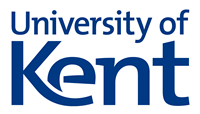About the Project
Overview
Immune checkpoint pathways determine the abilities of human malignant tumours to escape cytotoxic immune attack and thus progress the disease. Lots of efforts were recently invested into understanding the mechanisms of action/regulation of individual immune checkpoint pathways and identification of efficient targets for immunotherapy of cancers. However, the successful immune evasion associated with tumour progression is a result of cross-talks between a variety of immune checkpoint pathways. Biochemistry of these crosslinks forming anti-cancer immune evasion machinery remains poorly understood.
Our recent work has demonstrated cross-talks between Tim-3 (T cell immunoglobulin and mucin domain containing 3) – galectin-9, VISTA (V-domain Ig-containing suppressor of T cell activation), indoleamine 2, 3-dioxygenase 1 (IDO1) and transforming growth factor beta type 1 (TGF-β) pathways [1-5]. We studied cross-regulation of these pathways and the integrative biochemical machinery which they form in human cancer and embryonic cells. Furthermore, we uncovered the mechanisms associated with exhaustion and programmed death of cytotoxic T lymphocytes induced by this multifunctional immune checkpoint machinery [1-6]. Finally, we identified the biochemical mechanisms underlying immunosuppressive reactivity of T cells to the action of Tim-3-galectin-9-VISTA-IDO1-TGF-β immune checkpoint network [1-6].
The project will focus on understanding the biochemical mechanism underlying regulation of immune evasion activities of each pathway and, more importantly, the cross-links between these pathways which form unique machineries allowing specific tumours to escape cytotoxic immune attack. This will allow mapping of such immune evasion machineries and thus identifying the optimal therapeutic targets in order to turn off such networks and allowing cytotoxic lymphoid cells to attack and eliminate cancer cells and malignant tumours. This will lead to generation of fundamentally novel strategies of highly efficient and affordable personalised targeted immunotherapy of cancer.
Successful candidate will join the research group led by Dr Vadim Sumbayev and will be working in Medway School of Pharmacy, Universities of Kent and Greenwich. In addition, the PhD candidate will be a part of the European Research Consortium focusing on understanding the molecular mechanisms of anti-cancer immune evasion which includes collaborators from University Hospital Bern, Inselspital, Bern, Switzerland, Diamond Light Source Ltd, Didcot, UK, University of Oldenburg, Oldenburg, Germany and University Medical Centre Hamburg-Eppendorf.
References
-Yasinska IM, Meyer NH, Schlichtner S, Hussain R, Siligardi G, Casely-Hayford M, Fiedler W, Wellbrock J, Desmet C, Calzolai L, Varani L, Berger S, Raap U, Gibbs BF, Fasler-Kan E, Sumbayev VV. Ligand-Receptor interactions of galectin-9 and VISTA suppress human T lymphocyte cytotoxic activity. (2020) Front Immunol 11: 580557.
-Teo Hansen Selnø A, Schlichtner S, Yasinska IM, Sakhnevych S, Fiedler W, Wellbrock J, Klenova E, Pavlova L, Gibbs BF, Degen M, Schnyder I, Aliu N, Berger SM, Fasler-Kan E, Sumbayev VV. Transforming growth factor beta type 1 (TGF-β) and hypoxia-inducible factor 1 (HIF-1) transcription complex as master regulators of the immunosuppressive protein galectin-9 expression in human cancer and embryonic cells. (2020) Aging, 12: 23478-23496.
-Yasinska IM, Sakhnevych SS, Pavlova L, Teo Hansen Selnø A, Teuscher Abeleira AM, Benlaouer O, Gonçalves Silva I, Mosimann M, Varani L, Bardelli M, Hussain R, -----Siligardi G, Cholewa D, Berger SM, Gibbs BF, Ushkaryov YA, Fasler-Kan E, Klenova E, Sumbayev VV. The Tim-3-Galectin-9 Pathway and Its Regulatory Mechanisms in Human Breast Cancer. (2019) Front Immunol. 10:1594.
-Yasinska IM, Gonzalves Silva I, Sakhnevych SS, Ruegg L, Hussain R, Siligardi G, Fiedler W, Wellbrock J, Bardelli M, Varani L, Raap U, Berger S, Gibbs BF, Fasler-Kan E, Sumbayev VV. High mobility group box 1 (HMGB1) acts as an “alarmin” to promote acute myeloid leukaemia progression. (2018) OncoImmunology, 7(6): e1438109.
-Gonçalves Silva I, Yasinska IM, Sakhnevych SS, Fiedler W, Wellbrock J, Bardelli M, Varani L, Hussain R, Siligardi G, Ceccone G, Berger SM, Ushkaryov YA, Gibbs BF, Fasler-Kan E, Sumbayev VV. The Tim-3-galectin-9 Secretory Pathway is Involved in the Immune Escape of Human Acute Myeloid Leukemia Cells. (2017) EBioMedicine, 22: 44-57.
-Schlichtner S, Meyer NH, Yasinska IM, Aliu N, Berger SM, Gibbs BF, Fasler-Kan E, Sumbayev VV. Functional role of galectin-9 in directing human innate immune reactions to Gram-negative bacteria and T cell apoptosis. (2021) Int Immunopharmacol. 100:108155.

 Continue with Facebook
Continue with Facebook




